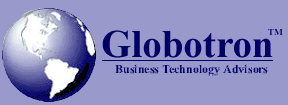|
CHAPTER 13 - CASH FLOW MODELS
Having a model of how much cash it is going to take
and when that cash must be available, is just like
having a road map. With it you can go far, without
it you run out of gas. Detailed first year cash flow
projections, followed by a summary overview of how
the next four years will flow, are a must.
1. Cash on hand (beginning of month)
Cash on hand same as (7),
Cash position, previous month.
2. Cash receipts:
(a) Cash sales
All
cash sales. Omit credit sales unless cash is
actually received.
(b) Collections from credit
accounts
Amount to be expected from all accounts.
(c) Loan or other cash
injection
Indicate here all cash injections not shown in 2(a)
or 2(b) above.
3. Total cash receipts (2a+2b+2c=3)
4. Total cash available (before cash out)(1+3)
5. Cash paid out:
(a) Purchases (merchandise)
Merchandise for resale or for use in product (paid
for in current month).
(b) Gross wages (excluding
withdrawals)
Base pay plus overtime.
(c) Payroll expenses (taxes,
etc.)
Include paid vacations, paid sick leave, health
insurance, unemployment
insurance, social security (employer portion). Might
be 10 to 45% of 5(b).
(d) Outside services
(e) Supplies (office and
operating)
Items purchased for use in the business (not for
resale)
(f) Repairs and maintenance
Include
periodic large expenditures such as painting or
decorating.
(g) Advertising
This
amount should be adequate to maintain sales
volume.
(h) Car, delivery and travel
(i) Accounting and legal
(j) Rent
Real
estate only (See 5(p) for other rentals).
(k) Telephone
(l) Utilities
(m) Insurance
Coverage on business property and products (fire,
liability); also
worker's compensation, etc. Exclude executive
life (include in 5(w)).
(n) Taxes (real estate, etc.)
Plus inventory tax, sales tax, excise tax, if
applicable.
(o) Interest
Interest on loans as it is injected (See 2(c)).
(p) Other expenses (specify
each)
Unexpected expenditures include here. Equipment
expenses
during the month should be included here
(non-capital equipment).
When equipment is rented or leased, record payments
here.
(q) Miscellaneous
(unspecified)
Small expenditures for which separate accounts would
be practical.
(r) Subtotal
This
subtotal indicates cash out for operating costs.
(s) Loan principal payment
Include payment on all loans, including vehicle and
equipment
purchases on time payment.
(t) Capital purchases
(specify)
Non-expensed (depreciable) expenditures such as
equipment, equipment lease, equity,
equity
placement, building
purchases
on time payment, leasehold improvements, etc.
(u) Other start-up costs
Expenses incurred prior to first month projection
and paid for after
start-up.
(v) Reserve and/or escrow
(specify)
Example:
insurance, tax or equipment escrow to reduce impact
of
large
periodic payments
(w) Owner's withdrawals
Should include payment for such things as
owner's income tax,
social security, health insurance, life insurance
premiums, etc.
6. Total cash paid out (5a through 5w)
7. Cash position (end on month) (4 minus 6)
Enter this amount in (1) Cash on
hand following month
Essential operating data (non-cash flow
information)
This is basic information necessary for proper
planning and for proper cash flow projection. Also
with this data, the cash flow can be evolved and
shown in the above form.
A. Sales volume (dollars)
This is a very important figure and should be
estimated carefully, taking into account size of
facility and employee output as well as realistic
anticipated sales (actual sales, not orders
received).
B. Accounts receivable (end of month)
Previous unpaid credit sales plus current
month's credit sales, less amounts received
current month (deduct "C" below).
C. Bad debt (end on month)
Bad debts should be subtracted from (B) in the month
anticipated.
D. Inventory on hand (end on month)
Last month's inventory plus merchandise received
and/or manufactured current month minus account sold
current month.
E. Accounts payable (end of month)
Previous month's payable plus current
month's payable minus amount paid during month.
F. Depreciation
Established by your accountant, or value of all your
equipment divided by useful life (in months) as
allowed by Internal Revenue Service.
Monthly Cash Flow Projection Worksheet
1. Cash on hand (beginning month)
2. Cash Receipts
(a) Cash sales
(b) Collections from credit accounts
(c) Loan or other cash injections (specify)
3. Total cash receipts
4. Total cash available (before cash out)(1+2+3)
5. Cash paid out
(a) Purchases (merchandise)
(b) Gross wages (excludes
withdrawals)
(c) Payroll expenses (taxes, etc.)
(d) Outside services
(e) Supplies (office and operating)
(f) Repairs and maintenance
(g) Advertising
(h) Car, delivery and travel
(i) Accounting and legal
(j) Rent
(k) Telephone
(l) Utilities
(m) Insurance
(n) Taxes (real estate, etc.)
(o) Interest
(p) Other expenses (specify each)
(q) Miscellaneous (unspecified)
(r) Subtotal
(s) Loan principal payment
(t) Capital purchases (specify)
(u) Other start-up costs
(v) Reserve and/or escrow (specify)
(w) Owner's withdrawal
6. Total cash paid out (5a through 5w)
7. Cash position (end of month)(4 minus 6)
Essential operating data (non-cash
flow information)
A. Sales volume (dollars)
B. Accounts receivable (end of month)
C. Bad debt (end of month)
D. Inventory on hand (end of month)
E. Accounts payable (end of month)
F. Depreciation (in months)
Workbook Main
Menu To Chapter 14
|



